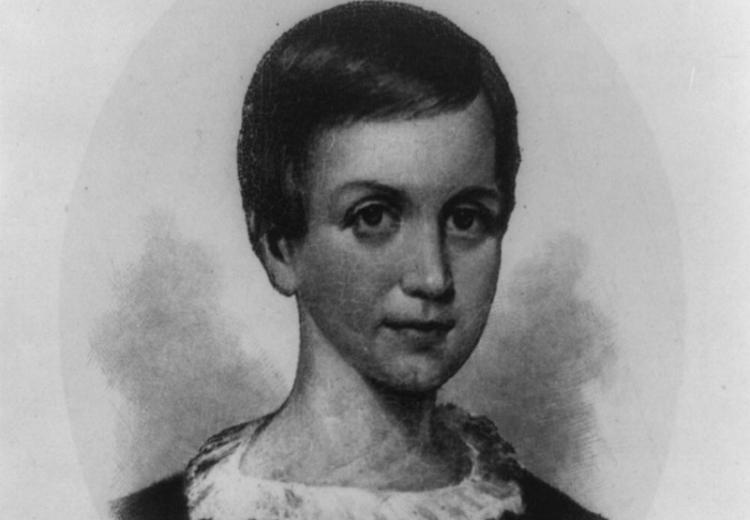Emily Dickinson and Poetic Imagination: "Leap, Plashless"

Emily Dickinson.
Emily Dickinson's poetry often reveals a child-like fascination with the natural world. She writes perceptively of butterflies, birds, and bats and uses lucid metaphors to describe the sky and the sea. This wonderful balance between imagination and observation is, in many ways, what makes Dickinson's verse so perfect for children and the perfect hook for a life-long appreciation of poetry.
In this lesson, students will read and explore one of Dickinson's nature poems, "A Bird came down the Walk—" through interaction with other art forms. First, they will listen to clips of a hymn to help them hear Dickinson's meter. Then, they will view 19th-century bird images and describe what they see, just as a poet would, and they will observe how a poet plays with language and imagery to create a scene by acting out verse lines. Finally, they will write a brief poem of their own using what they have learned and their own observations.
Guiding Questions
How does a poet use imagery, sound, and metaphor to tell a story or create an impression?
In what ways is Dickinson's poem related to other 19th-century arts?
Learning Objectives
Learn how to read and understand poetry
Become familiar with Emily Dickinson's verse
Understand the literary use of imagery, sound, and metaphor
Discover how to listen for meter in songs and poems
Make connections between visual, audio, and verbal texts
Employ creative writing skills
